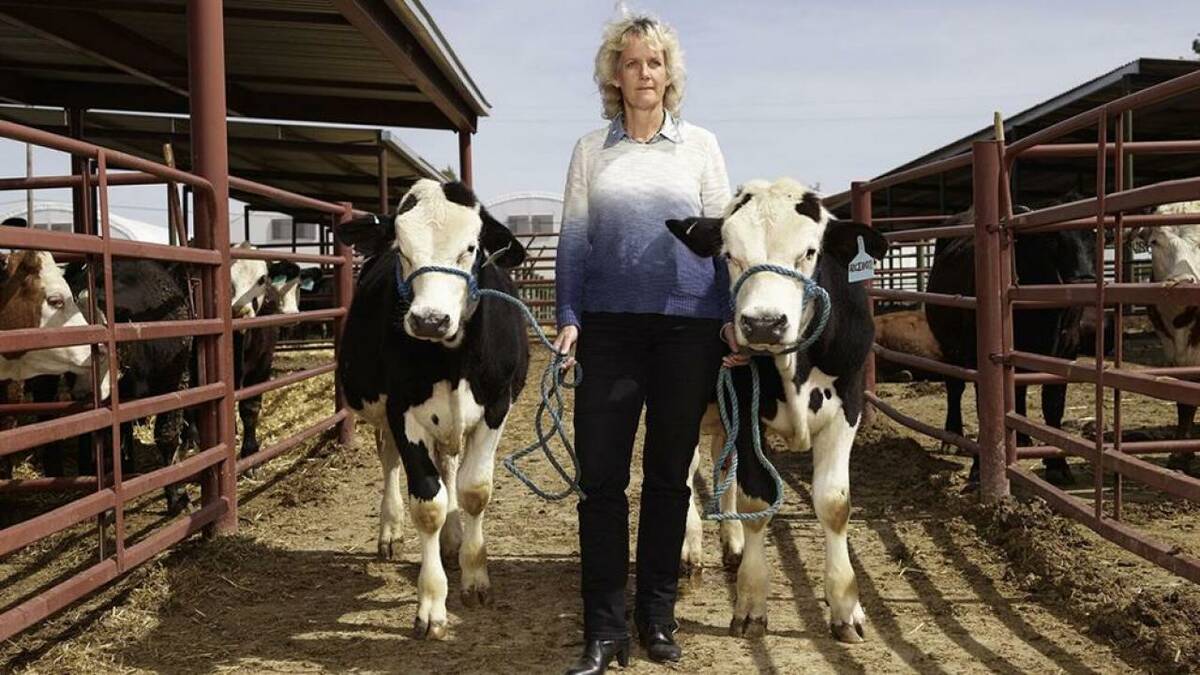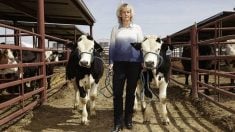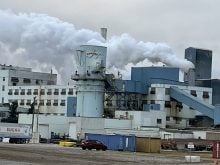Leo Bertoia doesn’t yearn for a sunny, winter getaway to Mexico. Instead, the Langham, Sask., dairy farmer looks forward to the day when he can spend more time at home, away from airports, hotel rooms and international conferences.
Living out of a suitcase can have its moments, says the former president of the Dairy Farmers of Canada, but when you’re on the road 200 days a year, there’s no substitute for a home-cooked meal and a sleep in your own bed.
“I enjoy the political side of the industry but it can be very demanding,” said Bertoia, who owns and operates Craila Dairy along with his wife and business partner, Charlotte.
Read Also

Stacking Canada up on gene editing livestock
Canada may want to gauge how Argentina and other countries have approached gene editing in livestock and what that has meant for local innovation.
“I’ve been pretty involved in dairy politics for quite a few years now at the regional, national and international levels so I’m looking forward to spending more time at home.”
Bertoia came by his knowledge of the Canadian dairy industry honestly.
In the early 1970s, the supply management system was in its infancy and milk production quotas were relatively inexpensive and easy to acquire.
In Saskatchewan, there were only a handful of established dairy farmers and the province was encouraging newcomers to enter the industry.
Bertoia and his wife, who both grew up on mixed farms near Cut Knife, Sask., jumped at the opportunity.
In 1974, they bought a small dairy farm south of Langham, with 10 commercial dairy cows and 240 acres of land.
Since then, the Craila Dairy has seen significant changes.
Soon after they bought the farm, the Bertoias built a new barn, renovated another, updated the dairy’s milking and feeding systems and added a new feed silo. Later, they bought more milk production quota, expanded the herd to 80 purebred Holsteins and acquired more farmland.
Today, the 900 acre operation produces enough surplus forage to run a custom feeding operation, as well as the dairy.
The farm has one full-time employee and three casuals who help with milking during the week.
Along the way, the couple also raised two children, Craig and Carla, after whom the Craila Dairy is named.
Today, Craig is married and living in Norway where he and his Norwegian wife run a dairy of their own about 40 kilometres south of Lillehammer. Craig met his wife during an agricultural exchange to Australia in 1984.
True to family tradition, Carla was also involved in the dairy industry.
After graduating with a degree in food science, she took a position with Dairyworld in Saskatoon and was eventually transferred to Vancouver. Today, she is operations manager with Soyworld.
In the early years, Leo and Charlotte shared the on-farm duties but as time passed, Leo became more involved in the politics of the Canadian dairy industry, leaving Charlotte to handle the day-to-day management.
Earlier this year, Leo was serving as president of the Dairy Farmers of Canada, Canadian chair to the International Federation of Agricultural Producers and was actively involved in other dairy organizations at the regional, provincial and national levels.
“It’s not something I planned on getting into,” said Bertoia when asked about his involvement in dairy politics.
“But I strongly believe we’ve got a system that is second to none.
“The system we have in Canada is one where the dairy producers control their own destiny, and because of that, we’ve always been able to ensure that our producers get a fair and reasonable return on what they produce.”
When asked why the Canadian supply management system is preferable to an open market, Bertoia recited a list of benefits that includes higher producer returns, more control with milk processing companies, and relatively inexpensive consumer prices for dairy products.
“In many countries, producers have to take what the secondary processing industry is willing to give them,” Bertoia said.
“In those countries, producers are price takers but in Canada, the producers are the price setters. Even when you compare dairy to other Canadian industries like grain and pork, where producers are price takers, they’re having a really difficult time making ends meet.”
That said, Bertoia recognizes that dairy producers in other countries are often reluctant to pursue a system similar to Canada’s.
“No matter where you go in the world, farmers like the idea of setting the price for what they produce,” he said.
“What they can’t accept is the other side of the equation that says they also have to limit their production. In most countries, dairy producers are accustomed to maximizing production so they can’t imagine how they would benefit by producing less.”
As for his future in dairy politics, Bertoia has served notice that he’ll be scaling back his involvement over the next few years.
When that happens, he’ll be spending a lot more time in the milking parlour and a lot less time in boardrooms and committee meetings – a scenario that holds considerable appeal for Charlotte.
“I’ve enjoyed my involvement (in dairy politics),” said Bertoia.
“But I’m not getting any younger and I’m looking forward to spending more time at home and more time with my family and grandchildren.
“I think I’ve done my part for the industry … maybe it’s time to hand over the reins to some of the younger guys.”















